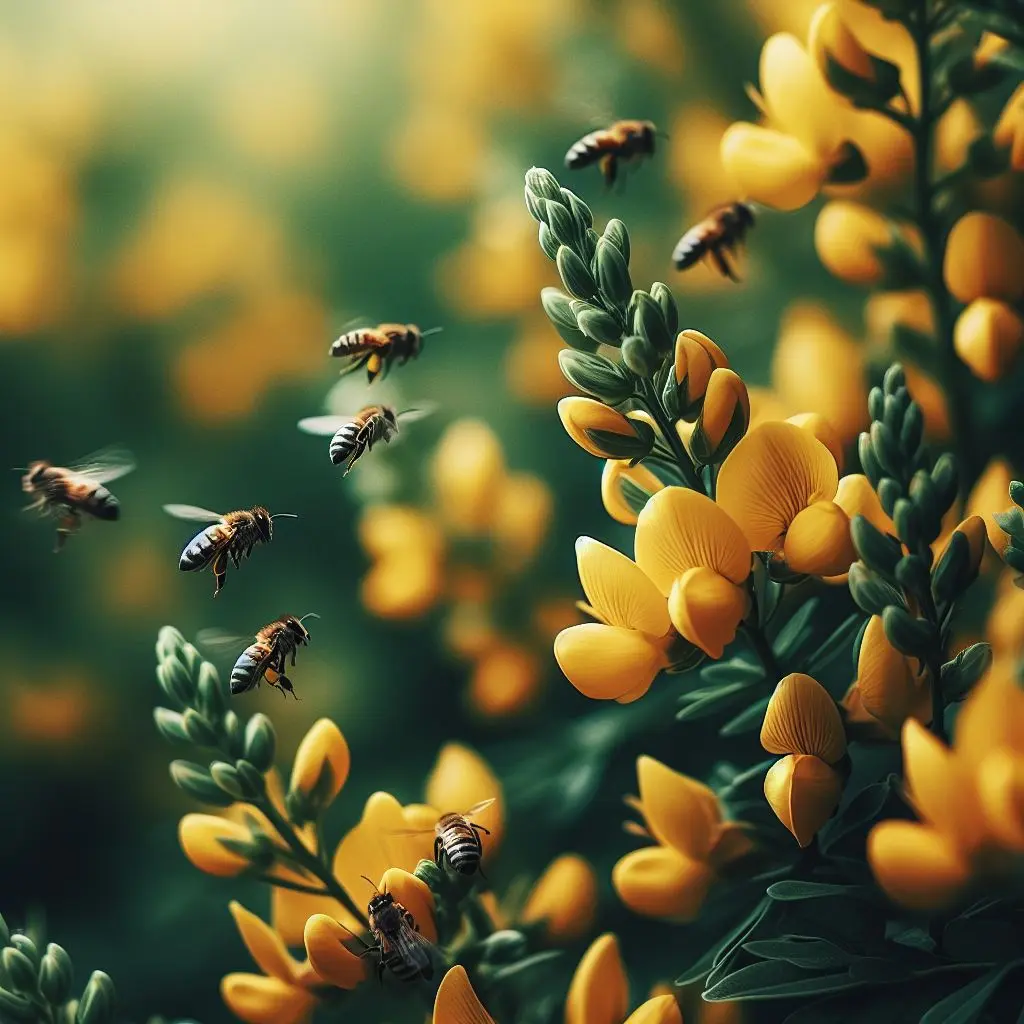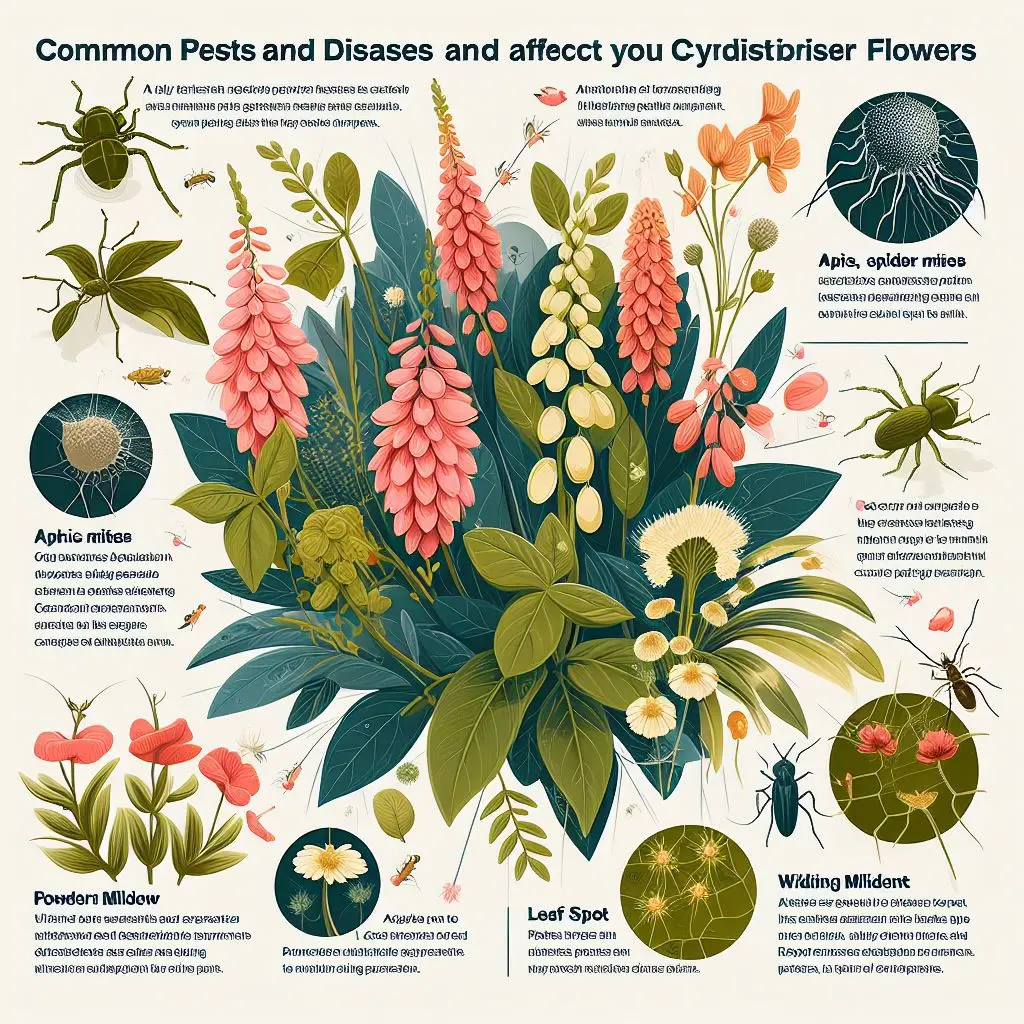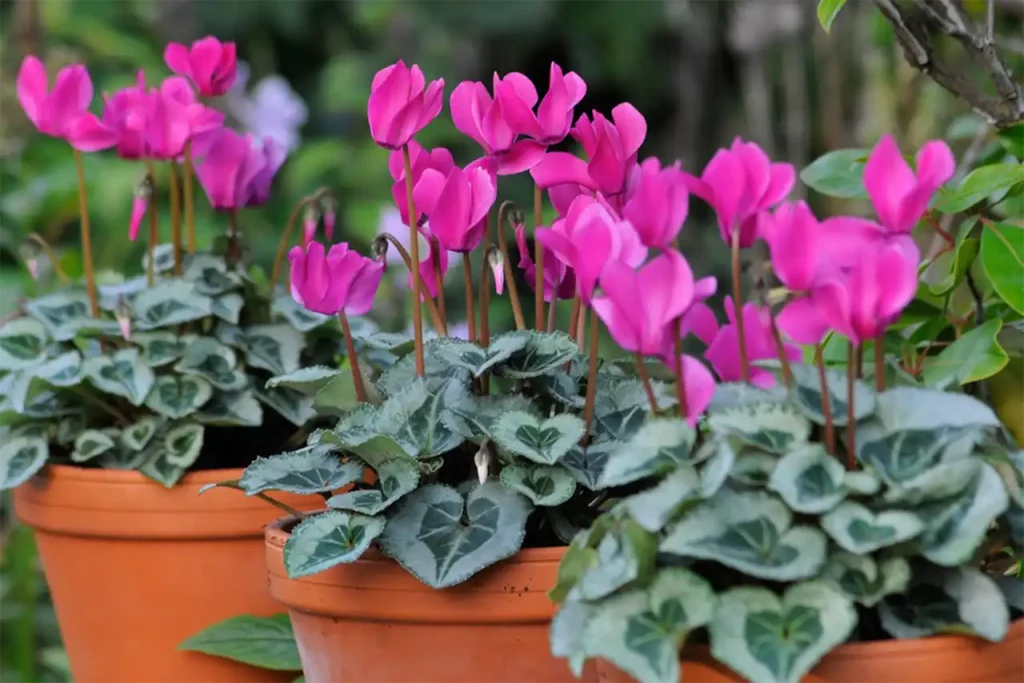The Cyclamen flower, also known as the Peacock flower, contributes to creating a sense of tranquility, freshness, and joy when planted in the surrounding environment. Even the mere sight of flowers can transform individuals’ moods and have positive effects on their behaviors. The Cyclamen flower, with its petals resembling a butterfly, is one of those flowers that can be cultivated in homes, pots, or gardens, providing not only a beautiful appearance but also the pleasure of its delightful fragrance.
Particularly suitable for urban green spaces, the Cyclamen flower is widely planted in boulevards, parks, and other public areas in both the northern and southern regions of our country to enhance the beauty of the city. However, it can also be successfully cared for in homes. In the following, we introduce the methods of planting and maintaining this beautiful flower.”
Perhaps you have seen and recognized various types of flowers in flower markets, but some of them are more unique and rare! The Cytisus flower, known as the Peacock Flower, Peacock Broom, Spanish Broom, or Scotch Broom, belongs to the Fabaceae family and is considered an ornamental plant. In addition to its beautiful flowers, this ornamental plant also emits a delightful fragrance, making it one of the main reasons for cultivation. The cultivation of Peacock Flowers is mostly done in urban green spaces and similar environments, but it can also be cared for at home, provided all the principles and care tips are observed.
| Attribute | Information |
| Scientific Name | Cytisus canariensis |
| Common Names | Peacock Flower, Spanish Broom, Scotch Broom |
| Family | Fabaceae |
| Native to | Canary Islands |
| Flower Characteristics | Fragrant |
| Appearance | Small, medium-green leaves, slightly serrated, on bare branches with deep grooves |
| Form | Vertical spreading with light green hanging branches |
| Width | 1 to 1.5 meters |
| Attracts Butterflies | Yes, attracts butterflies |
| Attracts Bees and Insects | Attracts bees and insects |
| Fruit Color | Olive-green seed pods that turn black in late autumn and open in warm weather |
| Flowering Period | From late April to the coming spring |
| Coastal Plant | Yes, resistant to sea winds |
| Uses | Suitable for hedging, general greenery, gardens, rock gardens, poor soil, and ornamental purposes |
| Air Pollution Tolerance | Yes, resistant to air pollution |
| Pruning Frequency | If necessary, be cautious when pruning on mature wood; avoid pruning young shoots |
| When to Prune | After flowering, prune flower stems to about half their length |
Origin of Cytisus Flower
Page Contents
ToggleThe origin of the Cytisus flower, also known as the Peacock Flower due to its large size and abundant foliage and flowers, is the Canary Islands and native to Europe. This plant, with its butterfly-like petals, is cultivated in shrub gardens in Western Asia and North Africa in abundance, but nowadays, with adherence to care principles, it can be grown worldwide.
Physical Characteristics of Cytisus
The Peacock Flower is a shrubby plant that is usually around 90 centimeters to 1 meter tall, with a spread that can sometimes reach up to 150 centimeters. Notable physical characteristics of the Peacock Flower include its butterfly-like flowers. The flowers of this plant are similar to yellow butterflies and are clustered.
The leaves of this plant are clover-like, tripartite, and egg-shaped with pointed ends. The colors of Cytisus flowers are mostly yellow and golden in most species, but in some regions, especially with breeding modifications, this flower may also appear in orange.
Flowering Season of Cytisus:

In the cultivation and propagation of flowering plants, understanding the flowering season is an important aspect. Some flowering plants are perennial or resistant, producing flowers in any weather conditions and with any care. However, some plants have a specific flowering season. In these plants, flowers only bloom during the flowering season, and after that, the flowers dry out until the next flowering period begins.
Cytisus Flowering Season:
The Peacock Flower, like other flowering plants, has a specific flowering season. The flowering season of Cytisus, or the Peacock Flower, occurs in spring. The growth of its leaves begins in late winter, and in early spring, the shrubs are filled with cluster-like flowers resembling butterflies, predominantly in yellow. Understanding the flowering season of the Cytisus plant is essential for determining the optimal pruning time. Pruning should be done after the end of the flowering period to avoid causing damage to the main bush.
Basic Needs of Cytisus Flower:
In the care of flowers and plants, understanding their basic needs is crucial. The primary needs are what affect the health of the flowers, maximize flowering, etc. In the care of the Peacock Flower, ample light, sufficient moisture, appropriate environmental temperature, and well-drained soil are of the utmost importance.
Cultivation and Propagation of Cytisus:
The beauty, pleasant fragrance, and adaptability to the climate of our country have turned the Peacock Flower into a good choice for cultivation in the urban green spaces of Iran. However, this flower can also be cultivated at home. To grow and have a bush of this beautiful flower at home, one must be familiar with the methods of cultivating Cytisus or propagating it.
Cultivation from Seeds:
One method of growing Peacock Flower shrubs is sowing Cytisus seeds. In this method, prepare the soil and planting bed first. The soil suitable for growing Peacock Flowers through seed cultivation should have proper drainage. The best soil type is a mixture of sand and sufficient fertilizer. After completing the nutrient components, the seed can be sown in a pot. The Cytisus pot should have an appropriate height.
The seed should be planted 20-25 centimeters deep in the pot to allow enough space for root and stem growth. If properly cared for, Peacock Flower seeds can live up to 60 years, and flowering may occur from them. To obtain seeds for this flower, you can use the seed pods found in the flowers. Each mature plant of this flower produces about 5000 seeds suitable for cultivation.
Propagation by Stem Cutting:
One of the methods of growing flowers and plants is seed cultivation, but this method is longer and more time-consuming due to the need for more care, and flowering may not occur in the same year the seeds are planted. In these conditions, it is better to use the propagation of Cytisus instead of cultivation. One of the methods of propagating Peacock Flower or Cytisus is stem cutting.
The best time for stem cutting to propagate Peacock Flower is summer and after the end of the plant’s flowering. To do this, first identify the young branches of the plant and separate a stem for plant propagation. The stems should be about 7-8 centimeters long and planted in light soil rich in nutrients, such as coco coir. The stem of the Peacock Flower takes longer to root than other flowers, so it is better to soak the end of the stem in rooting hormone before planting.
Propagation by Layering of Cytisus:
Another method of propagating Cytisus is through layering. This method, which is feasible(possible)in spring, is simpler than stem cutting. To propagate this flower by layering, select tall stems that have sufficient flexibility and, while still connected to the main mother plant, place them in the soil.
The stems placed in the soil will develop roots after a while. It is better to leave the stems in the soil for one year to have strong roots. After this period, in the spring of the following year, the new plant can be separated from the mother plant.
Read more:11 Rabbit safe houseplants
Pruning Cytisus Flowers:
One of the crucial aspects of plant care that directly influences their growth is timely pruning. Those familiar with pruning bonsai are likely aware of its significance. Pruning prevents plant diseases and provides enough space for new leaf and stem growth. This practice can be applied to all flowers and plants to encourage more leaves and flowers in the next growth cycle.
The way to grow and care for broom plants according to thespruce website is:
Broom plants come in various heights and colorful displays. Leaving aside concerns about the aggressive nature of brooms, their use landscape is quite versatile. For example, brooms show colors in the spring and summer that contrast well when planted against other green shrubs. Taller types of brooms can be planted as hedges or borders. Dwarf species of brooms are beautifully planted in a rock garden.
Some important tips for pruning the Cytisus flower include:
- The best time to prune Cytisus flowers is after the end of the flowering period. Therefore, one must wait until the last flower has shed before performing this task.
- The green leaves of Cytisus indicate its health. If the leaves change color after pruning, strengthening and treating the plant should be initiated.
- Yellow varieties of this flower are more resistant to pruning and changes such as stem cutting.
- It’s advisable to place the plant in an open space after pruning to encourage flowering.
- While Cytisus flowers have a short lifespan, proper and timely pruning can extend their flowering period.
However, pruning has its principles that vary for each flower. In the case of Cytisus, there are specific principles for pruning that, if not followed, can lead to the destruction of the flower.
Ideal Environment and Maintenance Conditions for Cytisus Flowers:
While timely pruning has a significant impact on increasing the flowering of flowering plants and their health, addressing and preparing a suitable environment for plant growth also greatly influences their quality. For example, replacing the Cytisus flowerpot on time and at the right time helps the health of its roots and stems, or the suitable environment for Cytisus flowers should have enough light, water, and temperature for plant growth.
Adequate Light for Cytisus Flower Growth:
Proper lighting is the first principle in caring for Cytisus flowers. While suitable for home cultivation, this flower should be placed on a balcony or terrace. The Peacock Flower requires a bright and sunny space, but it should be kept away from direct sunlight. Direct sunlight, especially at noon, can damage and scorch(burn) the plant’s leaves.
Suitable Temperature for Cytisus Flowers:
Another critical aspect to consider for proper care of the Peacock Flower is the temperature of the environment. While this flower has relatively resilient leaves, it thrives better in a balanced temperature. The optimal temperature for maintaining this flower is between 15-18 degrees Celsius. Cytisus can tolerate temperatures down to 4 degrees Celsius in winter, but beyond that, it may suffer from cold and subsequent leaf shedding.
Watering Cytisus Flowers:
Proper watering is another crucial aspect of caring for Cytisus flowers. This flower is sensitive to excessive watering and waterlogging, so the amount of water in the pot should not cover its surface.
The best watering intervals for this flower are twice a week in summer and spring, once the soil surface dries out in autumn, and approximately once every 10 days in winter. Additionally, on warm days in autumn and winter, it’s beneficial to mist the plant once a day.
Fertilization and Suitable Soil for Cytisus Flowers:
For better growth of the Peacock Flower, similar to other flowering plants, suitable fertilizers can be used. Fertilizing Cytisus flowers should be done before the onset of flowering to enhance the vibrancy, color, and quantity of the flowers. Specialized fertilizers for this flower are available at garden centers.
**Pests and Diseases of Cytisus Flowers:**

Pests and diseases are other issues that all plants may face. Timely prevention of pests and diseases ensures that the plant can be treated without significant damage. However, proper diagnosis of the pests and diseases is crucial for effective treatment.
Wilting of Cytisus Flowers:
The first issue among pests and diseases of Cytisus is wilting and drooping of its leaves. This problem usually occurs due to excessive watering. To address this, attention should be paid to preventing the soil from becoming too waterlogged. In such conditions, watering should be spaced out to allow the middle sections of the soil to dry completely.
Drying of Cytisus Leaves:
Drying of leaves is another problem with this flower. If the stems are not properly cared for during pruning or if the roots are damaged, this issue may arise. It can also occur due to excessive thirst. An excessively warm and dry environment can contribute to this problem as well.
Blackening of Cytisus Leaves:
The blackening of leaves is more common in Cytisus scoparius. This issue may occur due to excessive cold. During winter, the flowerpot should be placed in a location where it is not exposed to direct snow and wind.
Leaf Shedding in Cytisus Flowers:
Leaf shedding indicates excessive thirst in the plant. Poor soil drainage or insufficient fertilizer can also contribute to this problem.
Applications of Cytisus Flowers:
Cytisus, or the Peacock Flower, has various applications in different industries. While it lacks significant medicinal properties due to the presence of some toxic substances, it is widely used in other fields.
Use in Dyeing Industries:
The yellow color of the Peacock Flower, which in some varieties is orange, red, or brick-colored, is highly practical for use in dyeing industries and color production.
Landscaping with Cytisus Flowers:
Another application of Cytisus flowers is for beautifying the environment. This plant remains green, lush, and beautiful even without flowers, making it suitable for urban landscaping. However, given its relatively high cost, the best use is for green space decorations, stem cutting, or timely seed planting.
Medicinal and Therapeutic Uses of Cytisus Flowers:
While the medicinal properties of Cytisus flowers are not extensive due to some toxic substances, they can still be used for certain issues. For example, the flowers can be used for maternal treatments to stimulate the uterus. Additionally, this plant is recommended for circulatory problems with a specific usage method. The flower’s fragrance can also be used in the production of perfumes and colognes.
What are the benefits and uses of Cytisus flowers?
Cytisus flowers are primarily used in dyeing industries due to their vibrant yellow color. They are also employed for landscaping purposes, and while they do not have significant medicinal properties, they can be used for specific therapeutic applications. Additionally, the fragrance of these flowers can be utilized in the production of perfumes and colognes.
How long is the lifespan of the Peacock Flower, and how can it be extended?
The lifespan of Cytisus is relatively short, but with proper care, including timely pruning, its lifespan can be extended.
What are the methods for propagating Cytisus flowers?
Cytisus flowers can be propagated through methods such as seed planting, stem cutting, and layering.
Can you name some pests and diseases of Cytisus flowers?
Some pests and diseases that Cytisus flowers may encounter include wilting, drying of leaves, blackening of leaves, and leaf shedding, which can be caused by factors like overwatering, damage during pruning, excessive cold, or insufficient care.
If you have any further questions or need additional information, feel free to ask!







